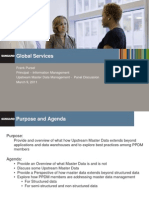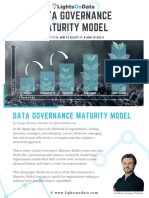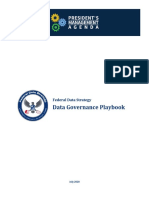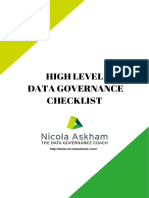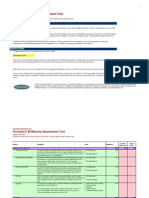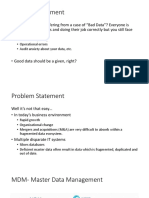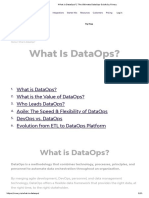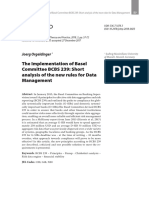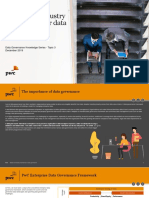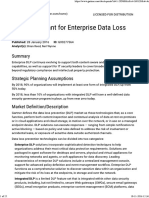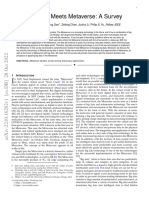0% found this document useful (0 votes)
219 views14 pagesSenior IT Managers' Data Strategy Guide
This document discusses the need for organizations to develop a data strategy. It provides several reasons why a data strategy is now important, including new analytical technologies that can utilize large amounts of data, new types and volumes of data, new risk and compliance concerns around data usage and protection, new forms of competition utilizing data, and the discovery of new business value that can be achieved through data-driven strategies. Developing an effective data strategy involves articulating why it is needed and determining what should be included, as well as understanding how it fits with other data and corporate activities. Learning from past failures will also help establish realistic stages for developing data strategy maturity.
Uploaded by
yah alabsiCopyright
© © All Rights Reserved
We take content rights seriously. If you suspect this is your content, claim it here.
Available Formats
Download as PDF, TXT or read online on Scribd
0% found this document useful (0 votes)
219 views14 pagesSenior IT Managers' Data Strategy Guide
This document discusses the need for organizations to develop a data strategy. It provides several reasons why a data strategy is now important, including new analytical technologies that can utilize large amounts of data, new types and volumes of data, new risk and compliance concerns around data usage and protection, new forms of competition utilizing data, and the discovery of new business value that can be achieved through data-driven strategies. Developing an effective data strategy involves articulating why it is needed and determining what should be included, as well as understanding how it fits with other data and corporate activities. Learning from past failures will also help establish realistic stages for developing data strategy maturity.
Uploaded by
yah alabsiCopyright
© © All Rights Reserved
We take content rights seriously. If you suspect this is your content, claim it here.
Available Formats
Download as PDF, TXT or read online on Scribd
/ 14









